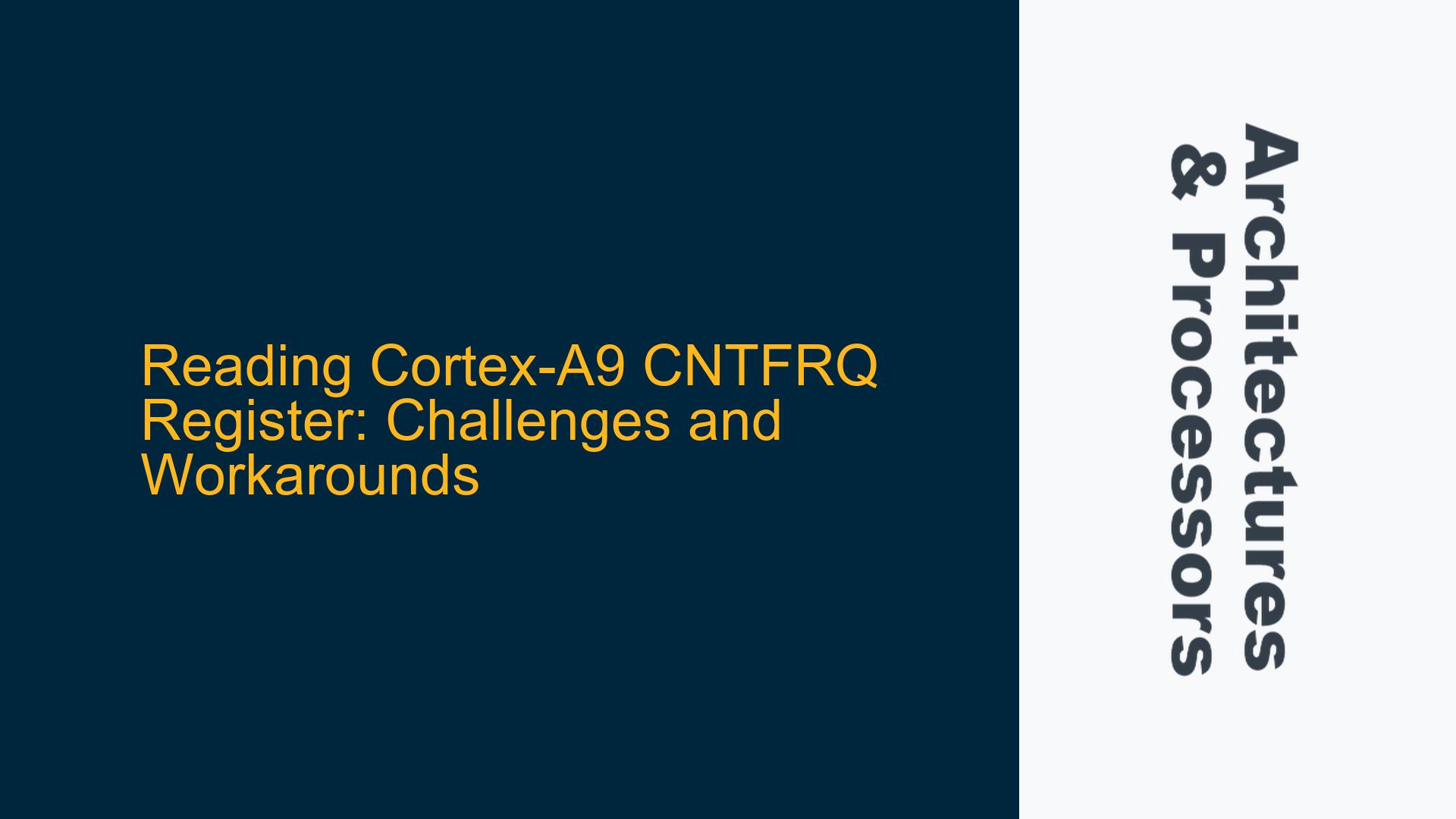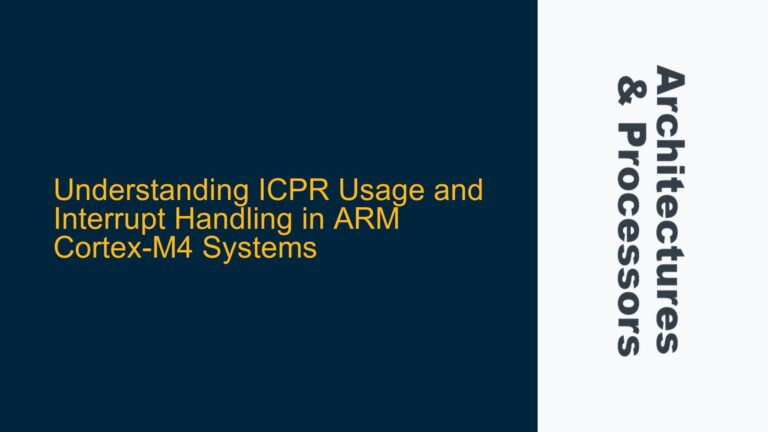Cortex-A9 CNTFRQ Register Absence and Its Implications
The Cortex-A9 processor, based on the ARMv7-A architecture, is a widely used core in embedded systems due to its balance of performance and power efficiency. However, one of the challenges developers face when working with the Cortex-A9 is the absence of the CNTFRQ (Counter Frequency) register, which is part of the Generic Timer extension. The CNTFRQ register is typically used to determine the frequency of the system counter, which is crucial for timing operations in bare-metal applications or real-time systems.
The ARMv7-A architecture supports several optional extensions, including the Generic Timer, Virtualization, and Large Physical Address Extensions (LPAE). The Cortex-A9 does not implement the Generic Timer extension, which means the CNTFRQ register is not available. This absence can be confusing for developers who assume that all ARMv7-A processors support the same set of registers and features. The Cortex-A9 instead provides its own set of memory-mapped timers, which are documented in the Technical Reference Manual (TRM) for the processor.
The lack of the CNTFRQ register in the Cortex-A9 has significant implications for developers who rely on it for timing and synchronization. Without access to the CNTFRQ register, developers must use alternative methods to determine the system counter frequency or implement timing mechanisms using the available memory-mapped timers. This requires a deeper understanding of the Cortex-A9’s timer architecture and the ability to work with memory-mapped registers directly.
Cortex-A9 Timer Architecture and Generic Timer Extension Limitations
The Cortex-A9 processor integrates a set of private timers and a global timer, which are memory-mapped and accessible through specific memory addresses. These timers are distinct from the Generic Timer, which is an optional architectural extension in ARMv7-A. The Generic Timer provides a system-wide counter and a set of compare registers that can be used for precise timing and synchronization across multiple cores. However, since the Cortex-A9 does not implement the Generic Timer extension, developers cannot rely on the CNTFRQ register or other Generic Timer features.
The Cortex-A9’s global timer is a 64-bit counter that increments at a fixed frequency, typically derived from the processor’s clock. The global timer is accessible through memory-mapped registers, and its frequency is determined by the system design. Unlike the Generic Timer, which provides a standardized interface for accessing the system counter, the Cortex-A9’s timers require developers to work directly with memory-mapped registers. This can complicate the development process, especially for those who are accustomed to using the Generic Timer in other ARMv7-A processors.
The absence of the Generic Timer extension in the Cortex-A9 also means that developers cannot use the CNTFRQ register to determine the frequency of the system counter. Instead, they must rely on other methods, such as reading the frequency from a configuration register or using a fixed value based on the system design. This can introduce challenges in porting code between different ARMv7-A processors, as the timing mechanisms may vary significantly.
Implementing Timer Frequency Retrieval on Cortex-A9 Without CNTFRQ
To retrieve the timer frequency on a Cortex-A9 processor without the CNTFRQ register, developers must use the memory-mapped timer registers provided by the Cortex-A9. The global timer is the most commonly used timer for this purpose, as it provides a 64-bit counter that increments at a fixed frequency. The frequency of the global timer is typically determined by the system clock, and it can be accessed through the following memory-mapped registers:
- Global Timer Counter Register (GTCR): This 64-bit register contains the current value of the global timer counter.
- Global Timer Control Register (GTCTRL): This register controls the operation of the global timer, including enabling or disabling the timer and configuring its behavior.
To determine the frequency of the global timer, developers can use the following steps:
-
Read the Global Timer Control Register: The GTCTRL register contains information about the timer’s configuration, including the clock source and divider settings. By reading this register, developers can determine the base frequency of the global timer.
-
Calculate the Timer Frequency: The frequency of the global timer is typically derived from the system clock, which may be divided by a fixed value. By combining the information from the GTCTRL register with the known system clock frequency, developers can calculate the global timer frequency.
-
Use the Global Timer Counter Register: Once the global timer frequency is known, developers can use the GTCR register to measure time intervals or implement timing functions. The 64-bit counter provides a high-resolution timer that can be used for precise timing operations.
For example, if the system clock frequency is 1 GHz and the global timer is configured to use a divider of 4, the global timer frequency would be 250 MHz. This value can be used to convert timer ticks into real-time values, such as microseconds or milliseconds.
In addition to the global timer, the Cortex-A9 also provides private timers for each core, which can be used for per-core timing operations. These timers are also memory-mapped and can be accessed through specific registers. However, the private timers are typically used for local timing operations, while the global timer is used for system-wide timing.
Developers working with the Cortex-A9 must also be aware of the potential for clock scaling and dynamic voltage and frequency scaling (DVFS), which can affect the accuracy of timing measurements. In systems where the clock frequency can change dynamically, developers may need to implement additional logic to account for these changes and ensure accurate timing.
In summary, while the absence of the CNTFRQ register in the Cortex-A9 presents challenges for developers, the processor’s memory-mapped timers provide a viable alternative for implementing timing functions. By understanding the Cortex-A9’s timer architecture and working directly with the memory-mapped registers, developers can achieve precise timing and synchronization in their applications.






